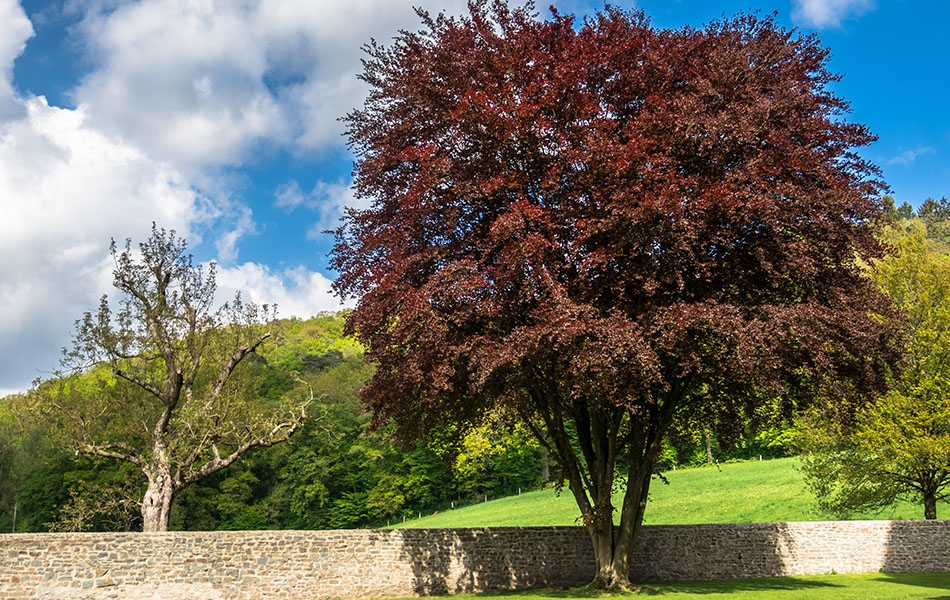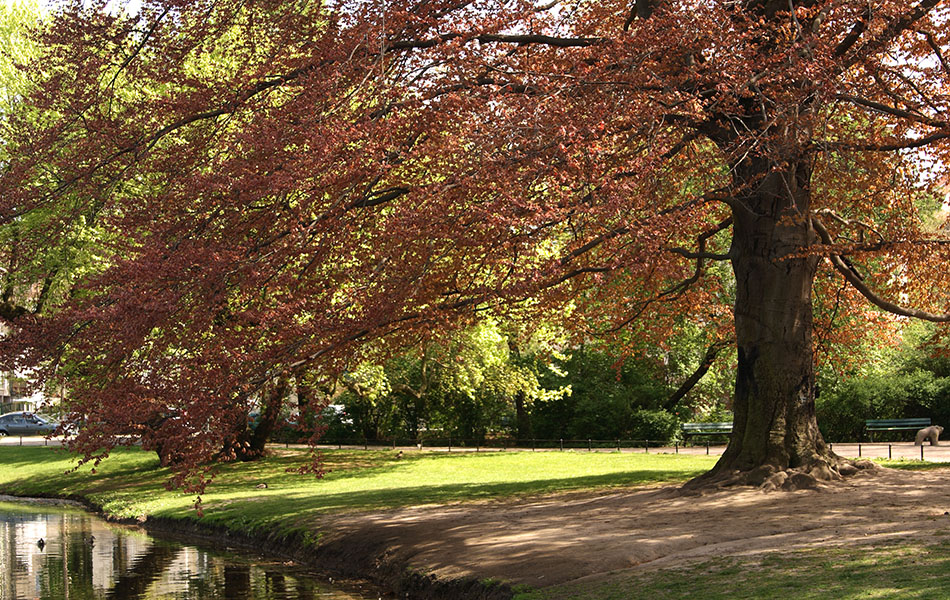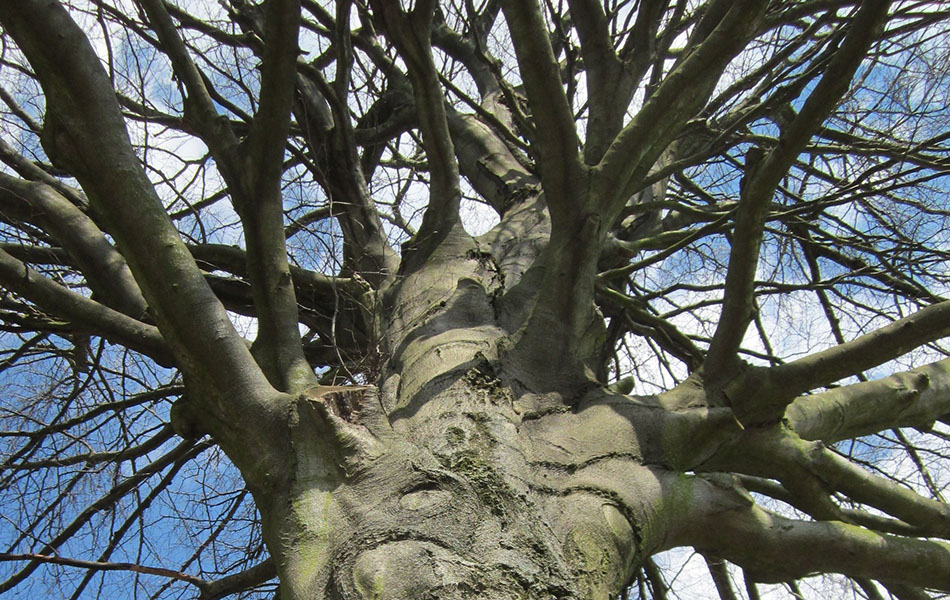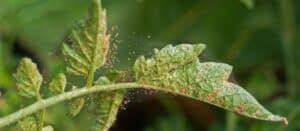Copper Beech at a Glance
Hardiness – Zones 4 through 7
Shape – Round, oval, or pyramid
Size – 60-80’ tall, 40-60’ wide when mature, although it can reach over 100-feet tall and wide
Sun – Prefers full sun, can tolerate partial shade
Bark – Silvery-gray, fairly smooth (although it sometimes appears wrinkled), and thin (easily damaged and sensitive to sunlight)
Foliage – Burgundy leaves change to a showy copper hue in fall. Brown, dried leaves tend to hang on the branches until spring, particularly in younger trees. Learn more about this process here >>
Flowers – Small, yellow-green, wind-pollinated flowers appear in April to early May, depending on the weather. Both male (catkins) and female flowers are borne on the same tree.
Fruit – Edible, triangular-shaped nuts (also called “mast”) with a spiny cover appear in fall. Trees begin producing nuts at around 10 years of age but heavier crops don’t appear until the tree is about 30 years old.
Scroll to the end of this article for a video showing the features of this beautiful landscape tree.

This beautiful large tree is best grown where it has plenty of space to spread out
Overall Description
Also known as European beech or purple beech, the copper beech (Fagus sylvatica purpurea) is a large, deciduous shade tree that graces many yards in central New Jersey and Pennsylvania. It’s known for its beautiful burgundy foliage that turns a lovely shade of copper in fall.
Unlike the native American beech, the copper beech was introduced into North American from Europe. It is grown extensively across American, partially because it tolerates a wider range of soils than our native species.
The copper beech grows quickly when planted in moist, well-drained soil and full sun, reaching a mature height of 60 to 80 feet and width of 40 to 60 feet. Some specimens can even reach over 100 feet tall and wide! Trees planted in more exposed conditions, especially in windy sites, tend to be slightly smaller.
The dense leaf canopy of a purple beech tree blocks sunlight and prevents rain from reaching the ground beneath it. Combined with its shallow roots, these factors make it almost impossible to grow grass under a copper beech. Instead, a layer of organic mulch can be spread beneath the canopy to protect the roots and create a neat appearance in the landscape.
Beech trees tend to have tangled and crossing branches, and benefit from regular professional pruning.

Grass won’t grow beneath the dense shade of a copper beech
Preferred Growing Conditions
The copper beech is best grown as a single specimen tree, leaving plenty of space for it to grow. It doesn’t like being crowded and is not easily transplanted. We recommend planting a smaller tree, rather than buying a more mature one, as it’s more likely to survive the transplant shock when young.
If your property has heavily compacted soil, this is not a good tree to plant. When damaged, disturbed, or grown in sub-optimal conditions (for example, through soil compaction, excavation, poorly drained soil conditions), copper beech trees are prone to fungal diseases, such as bleeding canker, leaf spots, and powdery mildew. Cankers, when left untreated, can kill branches.
Although it prefers to grow in full sun, copper beech trees have thin bark that is susceptible to sunburn when exposed. For example, if nearby trees are removed and your copper beech suddenly receives more sun, the bark can be damaged. Sometimes, this sunburn damage can be severe enough to kill the tree.

Copper beech trees often have crowded, crossing, and tangled branches that benefit from regular pruning
Pests & Diseases Affecting Copper Beech
These trees generally have no serious pest or disease problems but can be very prone to aphid infestation. Check for white aphids on the underside of leaves, especially later in summer. Aphids are not really detrimental to the tree, although some leaves may become yellow or distorted.
Copper beech may also develop powdery mildew, which looks like a white, powdery growth on leaf surfaces. As the disease progresses, the fungus spreads throughout the tree canopy.
Leaf spots can also occur but rarely cause serious damage. However, when left untreated, leaf spots can lead to leaf distortion and early leaf drop.
Prevention is the best treatment for these problems. Ensure that soil is well-drained and the tree is regularly pruned to increase air circulation through the branches. Avoid overhead watering that could promote fungal diseases.
If necessary, prune out severely infected areas (such as cankers) being sure to sterilize all pruning tools to prevent spreading the disease. Horticultural oil treatments can also be used for severe aphid infestations.
Copper Beech Video
GET THE LATEST NEWS
Subscribe to the Organic Plant Care Newsletter and get timely and helpful tips and updates monthly.
There's no spam - we promise!






